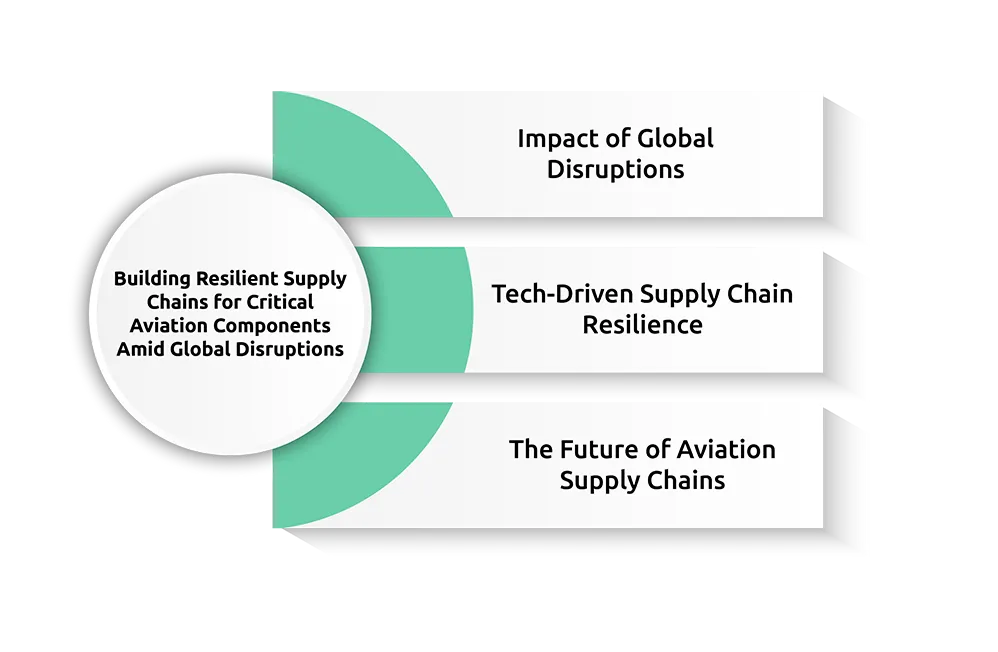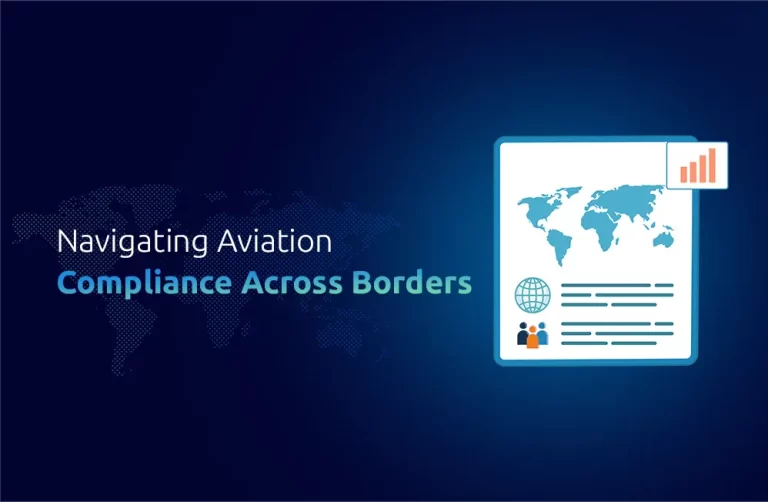Insight
Air travel operates as a multidimensional sector within the worldwide economy by depending on suppliers and manufacturers alongside distributors to assemble parts needed for safe aircraft functions. Supply chains suffered immediate exposure following recent international disruptions including the COVID-19 pandemic as well as geopolitical tensions, natural disasters, and trade interruptions. Recent global disruptions function as motivating factors to develop flexible supply chain networks for essential aviation components. Aviation is, by nature, a tight schedule and a tight safety means of transport, so even a minor supply chain disruption presents a material threat to operations. If critical components are delayed, in short supply, or fail quality control, the consequences can range from operational setbacks and financial losses to safety risks. Aviation companies also need to build supply chains that are flexible and resilient enough to withstand shocks, as well as cost-efficient
The Importance of Resilient Supply Chains in Aviation
All aircraft components including both tiny screws and advanced avionics and engine parts remain fundamental elements for aircraft performance and safety. A worldwide network of suppliers delivers these parts though they operate at different locations across multiple continents. Complex aircraft manufacture depends heavily on uninterrupted critical part supply to prevent production delays and aircraft maintenance and repair interruptions in the entire industry.
Suppliers that make their supply chain resilient can maintain uninterrupted material movement throughout unexpected operational disruptions. Critical components need resilience because they are necessary for aircraft operations.
Aircraft engines along with Power Systems represent aircraft core operating components so their delayed delivery or functionality failure will result in an aircraft standstill which halts operations.
Aircraft safety and aircraft navigation depend entirely on sophisticated avionics systems and communication systems. Flight safety is at risk when the supply of crucial components faces any interruption.
The aircraft’s body consists of large, heavy, expensive airframe and structural parts that create obstacles to manufacturing operations when distribution delays occur.
The development of resilient supply chains for essential components needs a three-part strategy that combines supplier variety selection with risk reduction measures and modern technological solutions to achieve stability.
Strengthening Aviation Supply Chains with Diversification and Technology
A resilient aviation supply chain development needs both supplier relationship strengthening and diversification of suppliers while integrating advanced technology systems and comprehensive risk management. Companies should expand supplier networks across different regions to reduce supply chain threats from both pandemic events and political or geographical instabilities. The implementation of strong supplier collaboration enables companies to foresee challenges and immediately respond efficiently during emergencies.
Technology functions at a critical level to build resilience. Real-time inventory and supplier performance tracking through data analytics systems combined with IoT devices lets companies find and manage potential disruptions right when they occur. The implementation of strategic inventory management which consists of keeping safety stocks of essential components helps maintain business operations during delays.
Effective risk management strategies built with risk assessment procedures and contingency measures enable businesses to face unexpected occurrences while component refurbishment practices promote sustainability by cutting waste production and enhancing flexibility. The integration of these strategies allows aviation companies to develop adaptable supply chains which operate effectively through worldwide challenges.
Government and Market Research Insights
Numerous documents from the International Air Transport Association (IATA) show how the aviation industry depends on international supply chains in its operation. The supply chain disruptions in the aviation sector reduce global GDP by $2.7 trillion through their impact on aircraft production costs maintenance expenses and operational costs.
According to World Trade Organization reports counterfeit and pirated goods made up 3.3% of global trade in 2016 and many of these counterfeit products infiltrated vital aviation components. The outlined statistics prove the necessity to protect supply chains from both manufacturing-based risks and counterfeit goods.
The OECD has identified the aviation field as extremely sensitive to natural catastrophes because these events interrupt both production processes and distribution networks. Large changes in the climate frequency of severe weather events require increased climate resilience from aviation companies in their supply chain infrastructure.
Conclusion
Supply chains must develop indestructible procedures for vital aviation components because global disruptions continue to increase their importance. The use of supplier diversification along with enhanced communication and technological alternatives enables aviation companies to develop stronger supply chains which decreases future disruption impacts. Strong resilience depends on organizations that include sustainability programs along with robust risk management practices. The aviation stakeholders depend on One Union Solutions to deliver effective solutions that guide them through complex processes and the uninterrupted flow of essential parts and technologies.
Did You Know that
the aviation industry generates $2.7 trillion of global GDP per year as reported by the Global Aviation Transport Association?
FAQs
- What are the main strategies for building resilient aviation supply chains?
Ans: Companies can combat disruption through supplier diversity mechanisms combined with enhanced collaboration between organization members and real-time monitoring using technology as well as optimized inventory management.
- How can technology enhance the strength of aviation supply chains?
Ans: IoT sensors, predictive analytics, and SCM software enable real-time tracking, risk identification, and proactive responses to disruptions.
- What is the role of safety stocks in supply chain stability?
Ans: Safety stocks provide a buffer for critical components, ensuring that production and maintenance schedules are not disrupted during shortages or delays.
- Why is diversification important for aviation supply chains?
Companies that choose various suppliers and sourcing areas across different locations minimize their risk exposure when regional events disrupt a single supply chain.
- How does sustainability affect aviation supply chain strength?
Ans: Sustainable practices, like recycling and repurposing parts, reduce dependence on new manufacturing and help maintain a continuous supply of critical components.












